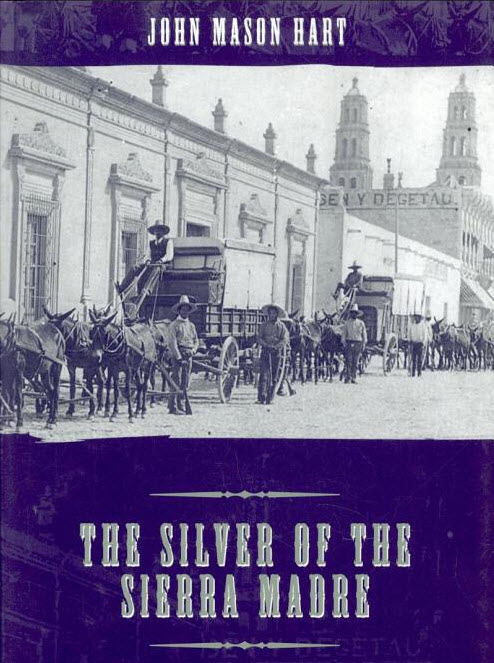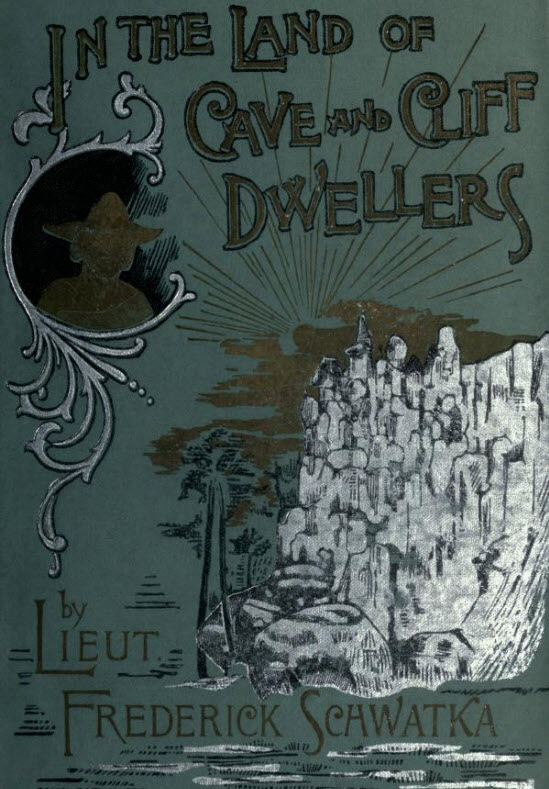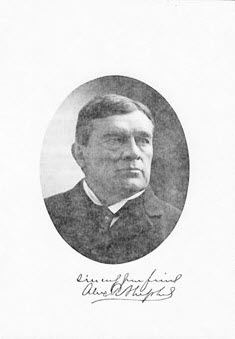Activities
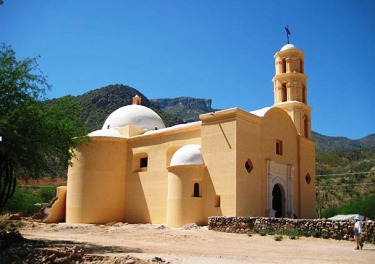
The Lost Cathedral is located in the little village of Satevo, just 8kms beyond Batopilas. It is one of the best examples of colonial architecture in the Sierra Madre, dating back to the 18th century. One can walk down the road to Satevo about 8kms to find this lovely cathedral at the end.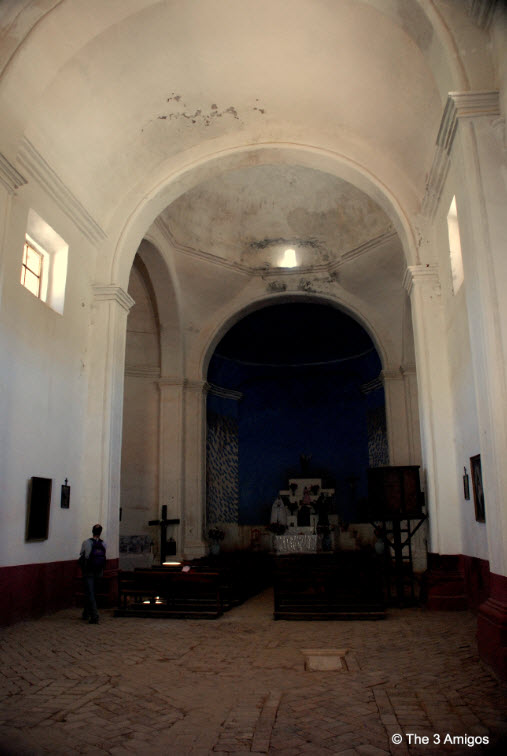
The ‘Santo Angel de Satevo’ was first founded in 1699 by the Jesuit missionary Manuel Ordaz for Indians who spoke Raramuri or Tarahumara. A visita (secondary mission) of the mission at Tubares, when the latter’s resident missionary died in 1739, Satevo still lacked a church or house for a priest. In the mid-18th century however, an energetic Jesuit from Parral, Father Luis Martin, took over at what by then was a settlement of some 220 Raramuri. A contemporary said of him: “His fervor, in these horrible canyons, made up for his poor health. By himself he acted as craftsman and laborer in the construction of the churches. He painted those of San Miguel and Satevo and adorned them with paintings of the Virgen de Los Dolores to whom he was very devoted. ” Father Martin, who was apparently responsible for most of the construction of this church – with its extraordinary convex apse, transepts, sacristy, baptistry, and chapel – was recalled to Parral before the expulsion of the Jesuits in 1767.
While many of the Jesuit missions in Chihuahua were taken over by Franciscans in 1768, Satevo instead was annexed to the secular parish (curacy) of Batopilas. In 1769 the mayor of Batopilas, Miguel Martinez Clemente, reported to Lope de Cuellar, military commander of Nueva Vizcaya: “I advised the pastor of this town about your supplying us with wood and brick which Luis de Ulibarri has asked for the processing of metals which the mine of Sebastian Zueco is producing. This action is urgently needed to make possible completion of the material construction of the church of Satevo.”
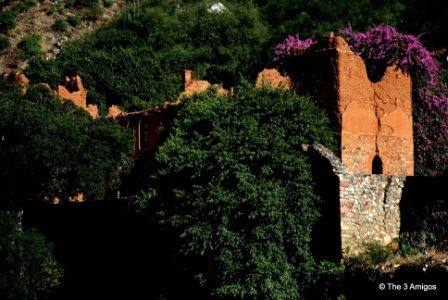
To reach the Hacienda San Miguel one can stroll upriver, through town, about 30 minutes, crossing the bridge to the other side. Once inside, one can see the area in about 30 minutes.
The vestiges of a past of opulence, times of mining bonanzas, are revealed in the heart of the Sierra Madre in the ruins of the Hacienda San Miguel. Its walls tell stories and whisper secrets; naked and exposed they stand the test of time and bear witness to the effort and work, end the fearless character of those pioneer miners of the Canyons.
The Hacienda San Miguel dates back to the XVII century, and although several reconstructions took place over three centuries of mining operation, it was not until the end of the XIX century that the hacienda took the architectural shape which can still be appreciated today. The Batopilas Mining Company, directed by the famous Silver Magnate, Alexander R. Shepherd, maximized the reduction of the metals through the use of advanced technology. He restructured and created an appropriate infrastructure, which met the requirements to carry out his objectives.
Don Jose Rivolta, in the mid-18th century, as a good captain of war and Alcalde Mayor, had conceived the necessity of improving the structure built a century earlier, turning it into a fortification in the style of a medieval castle. Enclosed with a high wall of masonry and watchtowers to post Sentinels to safeguard the property against possible attacks by bandits interested in the lucrative profits from the production of silver.
There were so many other miners, Spaniards and Mexicans alike, before the arrival of the American mining companies, who had taken possession of the property for its convenient position and security that the fortification provided them. The Spanish Don Rafael Alonso Pastran discovered several bonanzas which produced about 48 million pesos in 20 years of mining operations during the XVIII century. Later on, at the end of the same century another Spaniard, Don Angel Bustamante, took the installations for the reduction of ore and in 30 years, 30 million pesos worth of silver were produced in the the operation of the Carmen mine.
After a period of almost 30 years of mining inactivity by different conflicts generated by endless wars, the hacienda was back into operation, this time managed by Mrs. Natividad Ortiz and her partner the Indian Nepomuceno Avila. Don Manuel Mendazona worked several mines in Batopilas and he also made use of the infrastructure of the hacienda created during the last two centuries of silver production.
In 1861, the American John Robinson took control of the mining industry in Batopilas and in turn, he also took possession of the Hacienda San Miguel and its facilities for the purpose of the reduction of metals. Alexander R. Shepherd 20 years later not only made the hacienda the center of the operations of his company but also his residence. During 30 years of mining operation the BMC produced close to 30 million ounces of silver.
The armed conflict of the Mexican Revolution (1910-1917) and the depreciation of the price of silver resulted in the closure of the mines. The Americans departed leaving the mining industry abandoned. The Hacienda San Miguel began to be dismantled, and with the passage of time forgotten. Today the old ruins of the Hacienda San Miguel continue to resist the heavy weight of the course of time and an evocative nostalgia for its romantic past full of tales awakes the imagination and takes us back in time. In the old hacienda only vestiges remain of the opulence and splendor of the past.
Be sure to visit our History page too to read about the background of Batopilas.
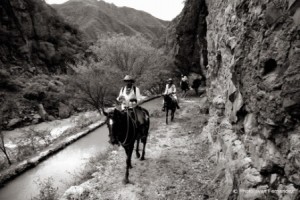 Hike along the old Aqueduct to get a great overall view of the area around Batopilas and to enjoy sightings of the tropical birds that nest near the water such as the Mot Mot, Squirrel Cuckoo and the Military Macaws.
Hike along the old Aqueduct to get a great overall view of the area around Batopilas and to enjoy sightings of the tropical birds that nest near the water such as the Mot Mot, Squirrel Cuckoo and the Military Macaws.
The trail is upriver and you can hike up to 14 miles along it, depending on your hiking ability, but most people opt for a few miles only and then return.
Hire a local guide and do a hike to the silver mine called Penasquito. 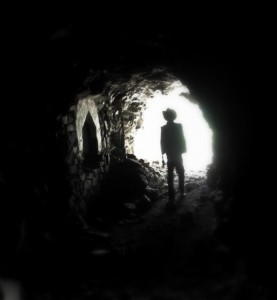 This mine can be explored ‘at your own risk’. You can walk upright and there are many interesting sights such as the enormous beams that hold up sections of the off shoot tunnels. You’ll need to bring along a flashlight and a local guide (roughly about 30USD for the guide per group of 10 or less). This mine can be seen along a lovely 3 hour hike that gives you great views of the village from above and the surrounding countryside.
This mine can be explored ‘at your own risk’. You can walk upright and there are many interesting sights such as the enormous beams that hold up sections of the off shoot tunnels. You’ll need to bring along a flashlight and a local guide (roughly about 30USD for the guide per group of 10 or less). This mine can be seen along a lovely 3 hour hike that gives you great views of the village from above and the surrounding countryside. 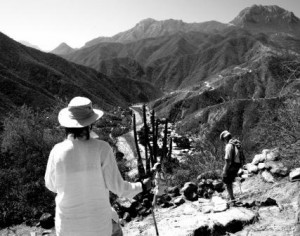
Well over 300 mines, claims and workings have been operated in the Batopilas district during 354 since silver was first found there. Some of these mines are now lost, others have changed names or merged with neighboring mines. Some are still intact and distinct. Many have no direct contact with the surface and are only reached through other mines and tunnels. Mines in the district have been grouped into 5 categories based largely on location and interconnections. Penasquito belongs to Todos Santos-Roncesvalles Group, which are located on Cerro Todos Santos, Cerro Pastrana and Cerro de Las Animas in the central part of the district. In 1885 the Porfirio Diaz tunnel was driven from near the river level to intersect these veins and to facilitate ore haulage. A number of relatively unproductive veins and claims were crossed on the course of the tunnel.
The Camuchin Mine Ranch is 3.5 miles away and is a nice walk where one can see some lovely birds and soak up the atmosphere. A guide is needed for this hike and you can find one in Batopilas. Go in the early morning when it is cool and the birds are out in full force. It is a moderate climb and you may be able to enter a working mine if they allow it that day.
The Batopilas Museum features articles from the silver mining days and a beautiful photo exhibit of the annual reenactment of the Siver Trail Ride. The entrance is unique in itself as it has been created to look like you are entering an old mine.



